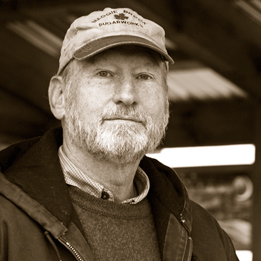Have you experienced examples of the disparity Philip implies between those who produce high-quality local food and those who are privileged to enjoy it? Do you have some thoughts about how the realities of by whom and for whom might be more fairly reconciled?
The most successful organic farmers I’ve encountered come from big money. This gives them a safety net so they can take more risks than farmers that start from scratch and rely solely on produce sales as revenue. They can also afford to set lower prices, allowing their product to compete with non-organic, non-local lower-priced foods and reach a broader consumer base. Organic/local farming as a sole source of income is not known for being a profitable venture. It costs a lot in terms of inputs so, in order to make ends meet for poor farmers at the beginning of the supply chain, the final product inevitably ends up being super pricey. This creates a disconnect between producers and consumers—only wealthy organic farmers can cater to the needs of poor consumers, while only wealthy consumers can afford the prices set by poor farmers.
An interesting exception is the Union Square farmer’s market in Manhattan, where wealthy and poor farmers alike are able to charge high prices simply because they can (and they need to compensate for gas money spent driving there from farther away).
In reflecting on the kinds of people who can afford the time, resources and strength to attend a farmer’s market or farmstand and buy fresh produce, I’m realizing this whole system excludes some key demographics. The universal exclusion, of course, is low-income people on food stamps. Last summer while living with relatives in Manhattan I’d stop by the Union Square farmers’ market all the time–but mainly for the atmosphere. I loved that it served as a gathering place for like-minded individuals interested in local food systems and sustainability, but when it came to actually purchasing the food, I found the prices of fruit, veggies, milk—nearly everything at the market—to be way out of price range. I found it silly that food stamps were accepted at the market info tent, since the absurdly high cost gives little incentive for those in poverty to opt for putting food stamps towards this fresh, organic produce rather than cheaper alternatives and getting more bang for their buck. In the ‘city that never sleeps,’ there’s a farmer’s market every day, so someone could theoretically find a place any day of the week to obtain fresh produce, despite the fact that the nearest farm is a 45 minute drive outside the city. But despite this seemingly progressive nature of the city’s food system, only the uber-wealthy are able to make the most of that privilege due to the high prices at these markets.
Apart from the obvious income bias, I realized there is another often-overlooked demographic being marginalized by many farm markets: senior citizens.
While the elderly or handicapped have plenty of opportunities for discount prices at restaurants, how can they be expected to eat healthfully or locally when the only way they can access produce at farmers’ markets is by carrying a bag and walking from vendor to vendor, often on grass or uneven terrain? There are rarely shopping carts at farmer’s markets, let alone farmstands. Or people to help customers carry their bags.
After spending time at Middlebury’s food shelf (HOPE), where there are such shopping carts, I’m wondering if elderly folk might prefer coming here, where they have assistance from the warm, caring staff at HOPE. I’ve noticed two distinctive things about HOPE. 1) The entire staff of HOPE is female and 2) a majority of visitors at HOPE are elderly or at least middle aged. And of that majority, most are males. I’m not sure if this is just an observation or if there is a reason behind this. Before working here, I expected that a majority of our customers would be young single mothers with children struggling to make ends meet. That demographic does come in every so often, but for the most part, it’s elderly men. Maybe they just come here more often than they actually need to since they enjoy the company and chit-chat with employees. Obviously people come here because they are hungry and needy, but I think the value of HOPE is more than that–it creates a sense of community. The only issue is it contributes to a class divide in Middlebury, and resentment voiced by those in poverty of “the goddamn college that drives prices up.”
Beyond the “social” appeal that draws people to HOPE, the food shelf is conveniently located adjacent to the ACTR public transport headquarters. I’m convinced a solution to all these demographic divides created by the local foods movement lies in improving community and connectedness at markets. If you focus on simply lowering prices at farmer’s markets, the solution seems daunting and almost impossible. Improve public transport and cultivate more of an all-inclusive community at the farmer’s market, with people who help each other out, and the market becomes a social space that is easily accessible. If the Middlebury farmer’s market were located near a public transit stop, I suspect more people would come regardless of price, and simply experiencing the atmosphere would improve their quality of life. Lower-income folk could come directly to the Middlebury farmers’ market, mingle with the farmers and actually see where their food is coming from, and at the end pick up leftover food fresher than it would be at HOPE (we usually take it directly from there and it sits for a few days). Even if the income divide persists, at least now there would be less of a social class divide and resentment if farmer’s markets were welcoming to people of all social classes.

